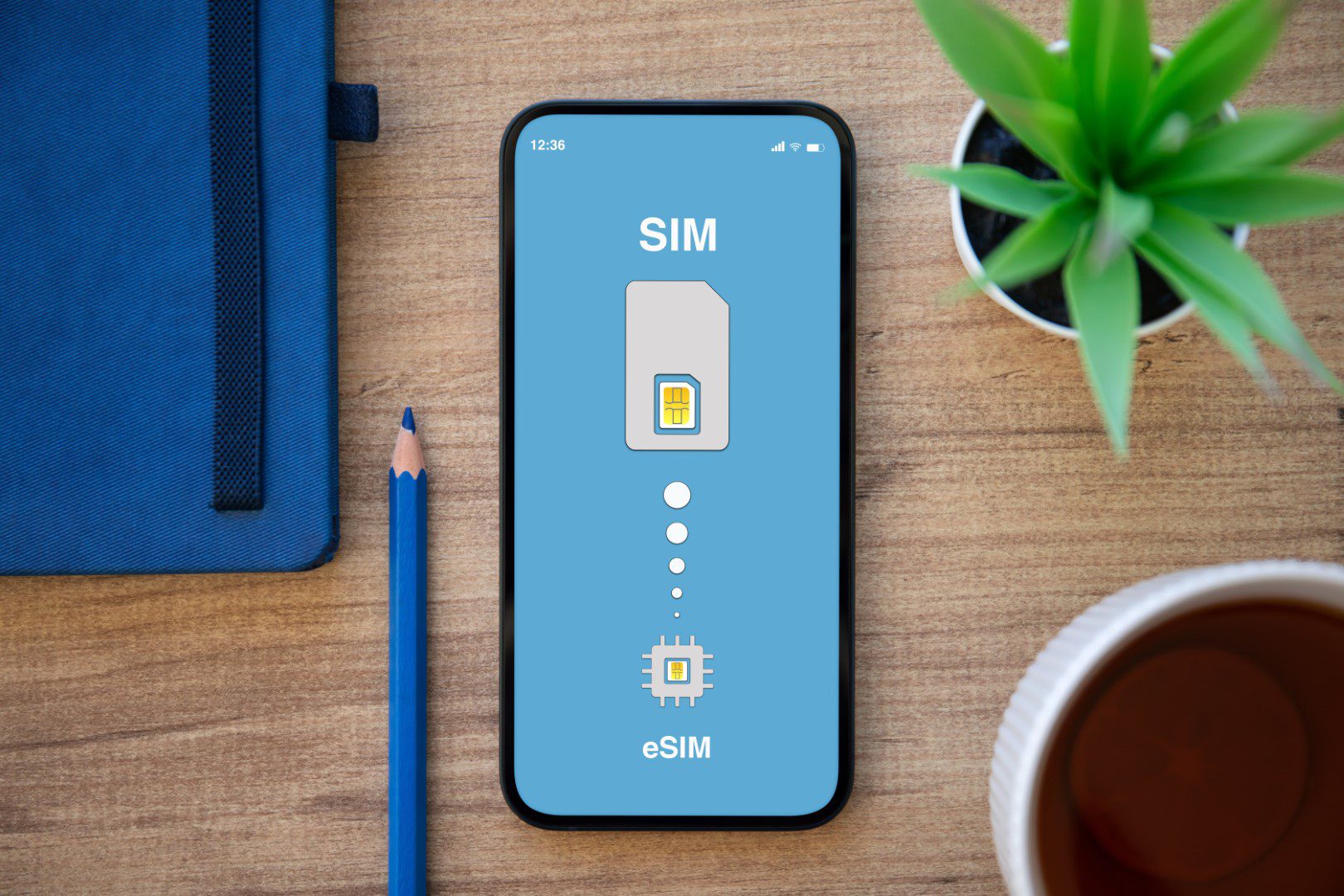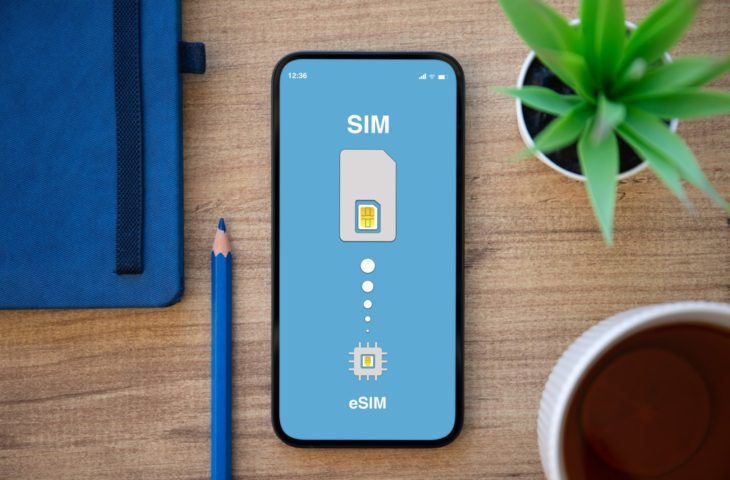The three major Belgian operators assume that eSIM will eventually replace the classic SIM card, but that is not the case yet. The technology currently appeals primarily to a niche market, while it is little known to the general public. However, there are many advantages.
Since 2020, Orange and Proximus have supported eSIM on compatible smartphones. Telenet brought eSIM to wearables that same year and is also bringing the technology to mobile phones this year. The digital virtual SIM card has many advantages over the physical card: it is more flexible, easier to activate and eliminates the need for plastic consumption and transport. However, almost four years after the launch of eSIM on the Belgian market, interest is very limited.
Limited popularity
Orange is ready to share interesting numbers. Currently, 41 percent of the provider’s customers own a smartphone that is eSIM-capable. That’s a significant percentage. eSIM was originally introduced on high-end phones, but is increasingly making its way to the general public, as this figure shows.
But only four percent of customers actually use an eSIM. That’s not much, since Orange itself offers eSIM at its points of sale if customers choose a compatible device. Proximus does not give specific figures, but confirms the story. The provider sees that the majority of customers are reluctant to digitize their SIM cards.
Many advantages
The three providers firmly believe in the advantages of eSIM. There are many of them, starting with the environmental aspect. SIM cards are small but ubiquitous. Eliminating the need for physical cards will save some plastic. Transport (usually by post) is also no longer possible.
However, comfort is more important for the end customer. eSIM makes it possible to activate a subscription completely digitally. With just a few clicks you can register a smartphone with the provider of your choice. This means that fiddling around, waiting for a new SIM card and changing tiny cards is a thing of the past.
In addition, eSIM makes it easier to combine multiple phone numbers on one device. Proximus, Telenet and Orange all point to the possibility of using a work and private number on one device via eSIM. If you want to do this today without an eSIM, you need a smartphone with space for two SIM cards.
There are also advantages abroad. This means you can quickly activate an eSIM from a local provider or a roaming specialist before vacationing abroad and surf without debiting your bank account.
Unknown technology
Nevertheless, there is no rush for eSIM. Unknown is unloved, seems to be the consensus. Orange knows from its own research that the technology is still little known and the added value is generally unknown. If the provider is given the opportunity to enter into a dialogue with customers, interest is aroused. Proximus also notes that the knowledge of the general public is generally limited.
Everyone agrees that the breakthrough of eSIM will come sooner rather than later. Telenet, in turn, assumes that the technology will initially become established in wearables such as smartwatches. For this reason, the provider stated that in this context it initially focused on the introduction of eSIM, at the expense of availability on normal phones. Telenet is currently the only provider that offers eSIM functionality for wearables in this way.
The GSMA (the organization behind mobile standards) has been dreaming about software-based SIM cards since 2010, and wearables were practically the first target group. Before Apple brought eSIM to smartphones in 2018, Samsung introduced the Gear S2 in 2016: a smartwatch with 3G eSIM compatibility.
eSIM as standard
Developments in the area of eSIM ensure that the digital SIM card becomes the standard. According to information from the Belgian providers, we can expect the first devices that only work with eSIM in the near future.
In the USA, the introduction of eSIM is already much more advanced. Apple has already launched its iPhone 14 there without space for a physical SIM card. When such devices come to the European market, adoption will accelerate. Orange expects that half of connections will be via eSIM by 2028 and the virtual digital SIM will be the new normal by then.
As mentioned above, this is generally a good thing. However, there is also a disadvantage: with eSIM, changing the phone is a little more complicated. You must digitally create and link an eSIM profile for each phone. If you change devices, you will have to fiddle with the settings. In principle, your provider will help you with clear instructions and an app, but of course it is a little less easy than just presenting a ticket.
Compatible devices
Can you already start with eSIM? The chance is quite high if you have a modern and slightly more expensive device. Since the introduction of the iPhone XS in 2018, all Apple devices have been compatible. With all variants of the iPhone 11, 12, 13 and 14 you can switch to eSIM or activate an eSIM for roaming while on vacation.
Android is not lagging behind. Samsung relies entirely on eSIM for its S series. All S20, S21, S22 and S23 series devices are compatible, just like future smartphones. The Z Flips and Folds are also compatible from Edition 2 onwards, along with the old Notes (20 and 20 Ultra). Oppo is on board with the X3 and the X5 (Pro), but has unfortunately stopped launching its flagship phones in Belgium since the X5. Google introduced eSIM with its Pixels.
Also worth mentioning are the Noka G60, the Xiaomi 12 T Pro and of course the Fairphone 4: the ecological approach of this device makes eSIM almost mandatory. All future high-end devices from the manufacturers mentioned will theoretically continue to support eSIM. In addition, you can rest assured that other manufacturers, especially lower-priced devices, will soon be compatible.
Start online
Interested in activating an eSIM? This can currently be done conveniently online or via the app for Orange and Proximus. We still have to wait a bit for Telenet, although the provider has announced that eSIM will come to the smartphone in early 2024. You can easily switch from your physical SIM card to an eSIM, although the added value of switching on a device where you only use a phone number is of course limited. A switch is useful if you want to add an eSIM as a second number to your device.
Are you going on vacation? Then you can look for an eSIM from international providers. Ubigi is an example of an interesting provider that offers data packages across national borders via a virtual SIM card. Here too, the configuration is done online using a QR code or an app.
If you work with a SIM card in your device and don’t need international roaming, there’s little reason to suddenly switch to eSIM. That will probably change with one of your next smartphones. If you change providers, eSIM is the fast and environmentally friendly option.














